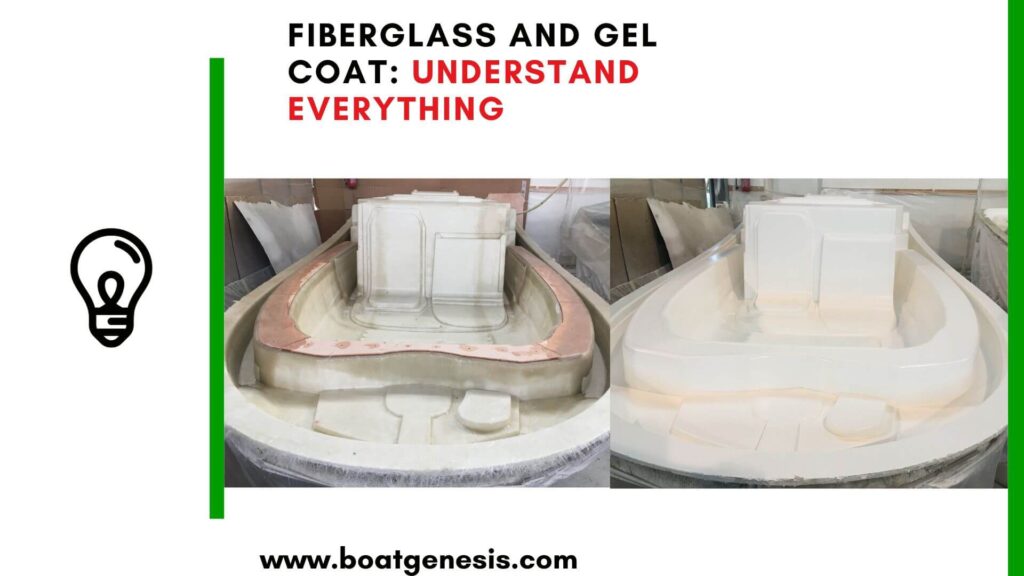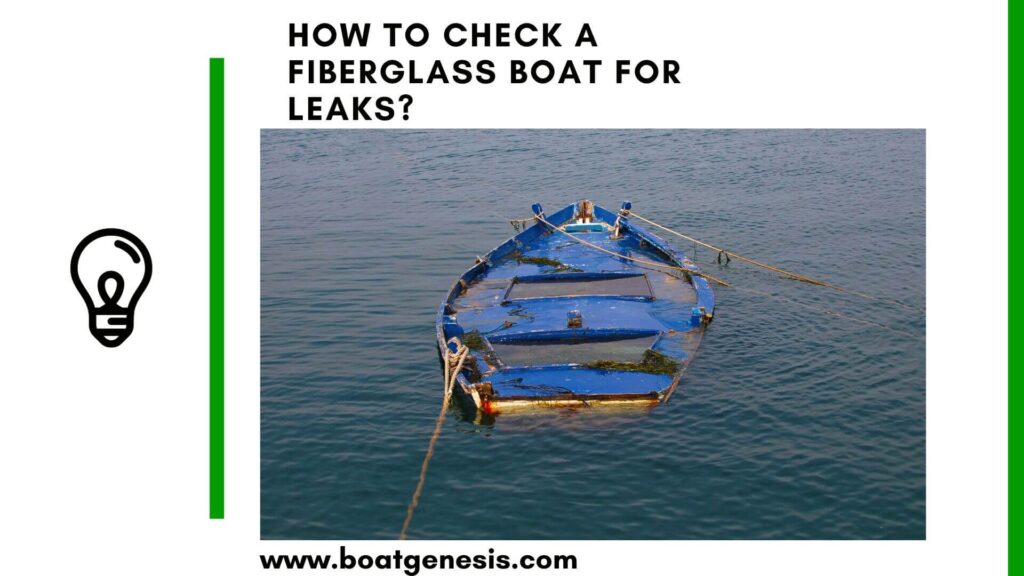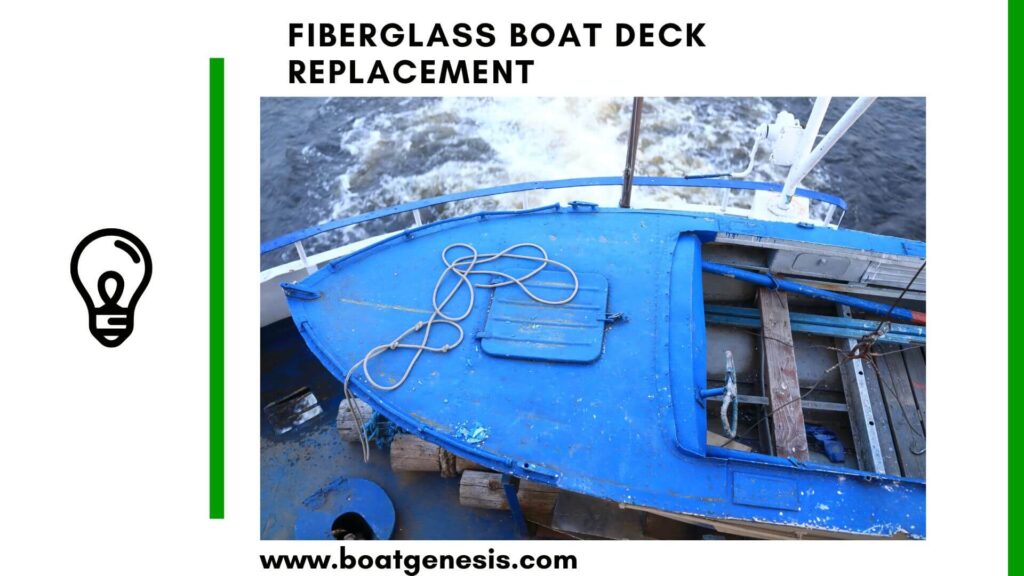Fiberglass and gel coat are used in a wide range of applications, from boats and cars to RVs and bathtubs.
But in this article, we’re focusing specifically on how these materials function in boats—how they’re used, how they wear, and how to properly maintain and repair them.
Whether you’re restoring a faded hull or fixing deeper structural damage, the same core methods apply to other fiberglass-based surfaces too. But here, our focus is the water: boats, decks, and hulls.
Let’s get started.
KEY TAKEAWAYS
Fiberglass is your boat’s structural foundation; it’s strong but needs protection.
Gelcoat is the glossy top layer that shields the fiberglass and keeps your boat looking great.
Fiberglass repair kits handle deeper structural damage.
Gelcoat repair kits fix cosmetic issues like scratches and chips.
Regular maintenance reduces the need for major repairs.
- What Is Fiberglass, and Why Is It So Important?
- What Is Gelcoat, and What Does It Do?
- Why Boats Use Fiberglass and Gelcoat
- Fiberglass vs. Gelcoat Repairs: Know the Difference
- Which Kit Do You Need?
- Regular Maintenance = Fewer Repairs
- How Gelcoat and Fiberglass Work Together in Boat Building
- Innovations in Fiberglass and Gel coat Technology
- FAQ: Fiberglass and Gel coat on Boats
- Final Word
What Is Fiberglass, and Why Is It So Important?

Fiberglass is the structural core of most modern boats. It’s made from woven glass fibers mixed with resin to form a lightweight but incredibly strong shell.
In boat construction, fiberglass provides the shape, strength, and rigidity needed to handle rough waters, heavy loads, and long-term wear. It’s like the bones and muscles of your boat—without it, there’s no backbone.
What Is Gelcoat, and What Does It Do?

Gelcoat is the smooth, glossy finish that sits on top of the fiberglass. It’s the first thing you see—and the first line of defense against the elements.
This thin layer protects the fiberglass underneath from:
- UV damage
- Saltwater
- Scratches and scuffs
- General wear and tear
Aside from protection, gelcoat gives your boat that shiny, showroom finish. Without it, your fiberglass would be exposed and degrade quickly over time.
Why Boats Use Fiberglass and Gelcoat
Boats have unique demands: exposure to water, sun, salt, and impact. Fiberglass and gelcoat are a match made in maritime heaven because:
- Durability: Fiberglass won’t rust or rot. It’s strong but flexible, which is ideal for withstanding waves and bumps.
- Aesthetics: Gelcoat gives boats their signature shine and color. It’s easy to polish and repair.
- Customization: Both materials can be molded into sleek shapes and vibrant colors, allowing for endless design options.
- Low Maintenance: Compared to wood or metal, fiberglass and gelcoat require less ongoing care.
Fiberglass vs. Gelcoat Repairs: Know the Difference
When your boat suffers damage, knowing what is damaged is the first step to fixing it properly. Is it just cosmetic? Or has the structure been compromised?
Fiberglass Repair Kits
Fiberglass repair kits are for structural damage, like cracks, holes, or delamination in the hull or deck.
These kits usually include:
- Fiberglass cloth or mat
- Polyester or epoxy resin
- Hardeners
- Mixing tools
Use a fiberglass kit when the damage goes deeper than the surface. These repairs restore the strength and rigidity of your boat’s structure.
Gelcoat Repair Kits
Gelcoat repair kits are for surface-level damage like:
- Scratches
- Chips
- Fading or discoloration
They typically contain:
- Gelcoat paste or liquid
- Catalyst (hardener)
- Color matching pigments
- Sandpaper and polishing compound
Use these kits to restore the finish and protect the fiberglass underneath from exposure and moisture.
Which Kit Do You Need?
Here’s a quick cheat sheet:
| Damage Type | Use This Kit |
|---|---|
| Hairline scratches | Gelcoat Repair Kit |
| Chips or small gouges | Gelcoat Repair Kit |
| Cracks through the fiberglass | Fiberglass Repair Kit |
| Holes or structural damage | Fiberglass Repair Kit |
Tip: Some repairs may require both kits—structural first, then cosmetic.
Regular Maintenance = Fewer Repairs
Staying on top of routine maintenance can help you avoid bigger repair jobs down the line. Here’s what you should be doing regularly:
- Wash your boat with freshwater and marine-safe soap
- Inspect the hull and deck for cracks or discoloration
- Wax the gelcoat to protect it from UV and salt
- Store your boat properly during off-season or harsh weather
Preventive care can extend the life of both the fiberglass and gelcoat—saving you time, money, and frustration.
How Gelcoat and Fiberglass Work Together in Boat Building

Think of boat construction as building a layered cake. The fiberglass is the dense, supportive layer—it gives shape and strength. Once that’s in place, the gelcoat is “frosted” on top as a smooth, protective barrier.
Together, these two materials create a boat that is:
- Structurally sound
- Water-resistant
- UV-protected
- Easy to clean and maintain
Understanding this partnership helps you appreciate why both layers are essential—and why neglecting one can affect the other.
Innovations in Fiberglass and Gel coat Technology
The marine industry never stands still. Here’s what’s new and what’s on the horizon:
1. Infusion and Vacuum Bagging
Traditional fiberglass layups can trap air bubbles, leading to weak spots. Infusion and vacuum bagging techniques pull resin through the fiberglass under vacuum pressure, creating a stronger, lighter, and more consistent hull.
This technology, once reserved for high-end yachts, is becoming more accessible to everyday boaters.
2. UV-Resistant Gelcoats
Modern gelcoats are formulated with advanced UV inhibitors, dramatically extending the life of your boat’s shine and color. Some even include anti-fouling properties to help prevent algae and barnacle growth.
3. Self-Healing Gelcoats
Research is underway on gelcoats that can “heal” minor scratches and cracks when exposed to sunlight or heat. While not yet mainstream, these innovations promise to make boat maintenance even easier in the future.
FAQ: Fiberglass and Gel coat on Boats
Q: Can I use a gelcoat repair kit on fiberglass damage?
A: No. Gelcoat kits only fix surface-level damage. If the fiberglass is cracked or broken, use a fiberglass repair kit first, then follow up with gelcoat to finish the surface.
Q: How often should I wax my boat’s gelcoat?
A: For most boaters, waxing 2–3 times per year helps maintain shine and UV protection. If your boat stays in the sun often, you may need to do it more frequently.
Q: Can I apply gelcoat without sanding?
A: Not recommended. Proper surface prep (cleaning and sanding) is essential to ensure good adhesion and a smooth finish.
Q: What causes gelcoat to crack or fade?
A: Common causes include prolonged sun exposure, impact damage, improper storage, or just age. Using marine-grade wax and covering your boat helps prevent this.
Q: Is fiberglass waterproof?
A: Fiberglass itself isn’t 100% waterproof—it’s water-resistant. That’s why the gelcoat is so important. It acts as the true waterproof barrier.
Final Word
Whether you’re fixing a scratch or patching up serious hull damage, understanding how fiberglass and gel coat work—and how to maintain them—will help your boat last longer, look better, and perform like it should.
By using the right repair kits and keeping up with regular care, you’re not just preserving your boat—you’re protecting your investment.
Hope this article has enlightened you.

Founder of BoatGenesis, Warren has hands-on experience in fiberglass boat repairs, marine equipment testing, and powerboat building. Learn more about Warren.




